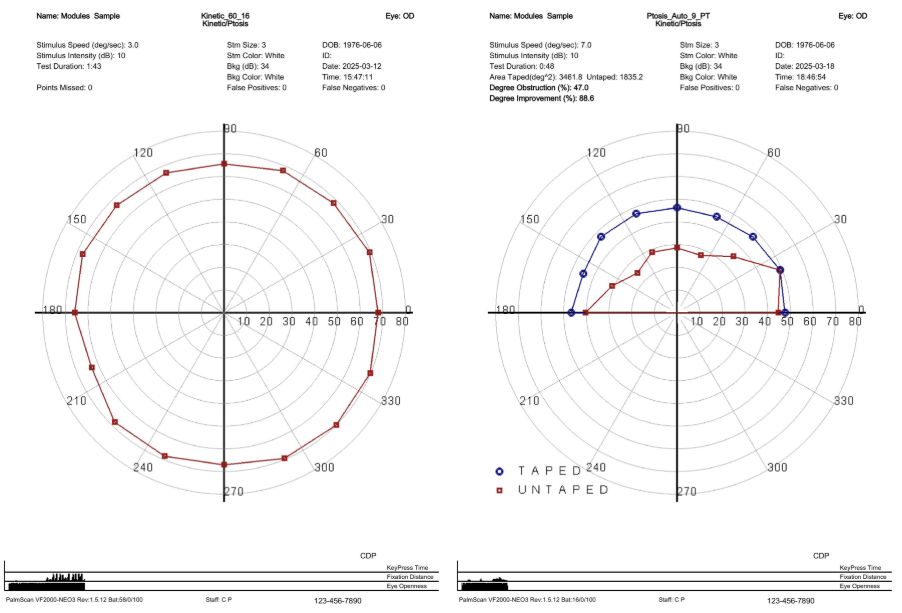Micro Medical Devices is thrilled to announce that we will be attending the XXXVI Pan-American Congress of Ophthalmology (PAAO), which will be held in Bogotá, Colombia, from May 30 to June 2, 2025....

Checkout New Blogs

Micro Medical Devices is thrilled to announce that we will be attending the XXXVI Pan-American Congress of Ophthalmology (PAAO), which will be held in Bogotá, Colombia, from May 30 to June 2, 2025....

Visual field testing is a key diagnostic tool for detecting peripheral vision loss and managing conditions like glaucoma and retinal disease. By mapping a patient’s full visual field, we can...

If you’re running an eye care practice today, you’re probably not a stranger to staffing challenges. Turnover rates have skyrocketed in recent years, putting ECPs in the difficult position of having...
Detecting glaucoma early is a top priority, and it shouldn’t come at the expense of efficiency or patient experience. Frequency Doubling Technology (FDT) perimetry offers a fast, reliable way to catch visual field defects sooner — with more sensitivity and specificity than a suprathreshold and in less time than a 24-2.
FDT perimetry uses low spatial frequency gratings flickering at high temporal frequencies to create a frequency-doubling illusion, specifically targeting the magnocellular (M-cell) pathway — one of the first affected in glaucoma. Because it’s fast, easy to administer, and patient-friendly, FDT testing is an excellent addition to your diagnostic toolbox.
Understanding the advantages of FDT perimetry can help you choose the best approach for different clinical scenarios. Here’s how it compares to other methods:
For busy ODs who need a quick, reliable way to screen for glaucoma and other optic nerve pathologies, FDT perimetry offers a smarter, more efficient approach without disrupting patient flow.
You don’t need to overhaul your current workflow to incorporate FDT perimetry — it can fit seamlessly into daily clinical operations. Most optometrists often find that it enhances efficiency while maintaining diagnostic accuracy.
Best practices for integration:
While clinical efficacy is crucial, understanding how to bill FDT perimetry correctly ensures that your practice benefits financially while improving patient care.
The CPT codes you’ll want to keep in mind include:
But when will insurance actually reimburse for FDT perimetry? Generally, you’re in the clear when testing glaucoma suspects, diabetic patients, or those with neuro-ophthalmic conditions. The key to maximizing reimbursement is proper documentation—linking the test to risk factors like high IOP, suspicious optic nerve changes, or systemic conditions that can affect vision. While it’s an excellent screening tool, FDT includes quantitative data and tests over 3 isopters teste within the central 30 degrees.
Additionally, be aware of payer-specific guidelines. Some insurers require additional justification for certain conditions, so make sure to stay up to date on Medicare and private insurance policies to avoid denials. Proper coding doesn’t just prevent claim rejections — it helps you get paid for the valuable diagnostic services you provide.
VF2000 G2 – YES
VF2000 NEO – YES
If you’re looking for a portable, high-tech, and efficient way to integrate FDT perimetry into your practice, the VF2000 NEO or VF2000 G2 model can be your solution. This cutting-edge VR-based perimeter has an optional module for FDT-based rapid screening tests along with full-threshold perimetry, making it an all-in-one tool for modern optometrists.
Why Choose the VF2000 for FDT Testing?
The VF2000 isn’t just an upgrade — it’s a game changer. Experience this cost-effective, space-saving solution that modernizes visual field testing firsthand. Schedule a demo today or contact us to learn more!